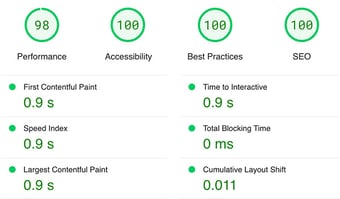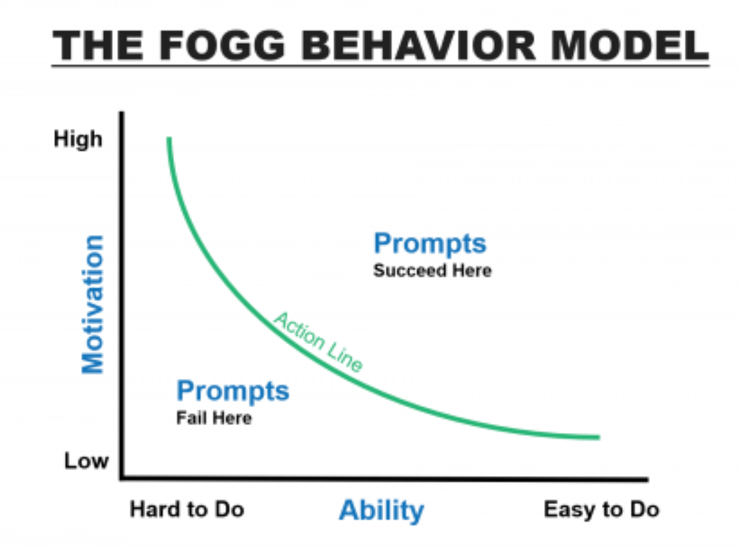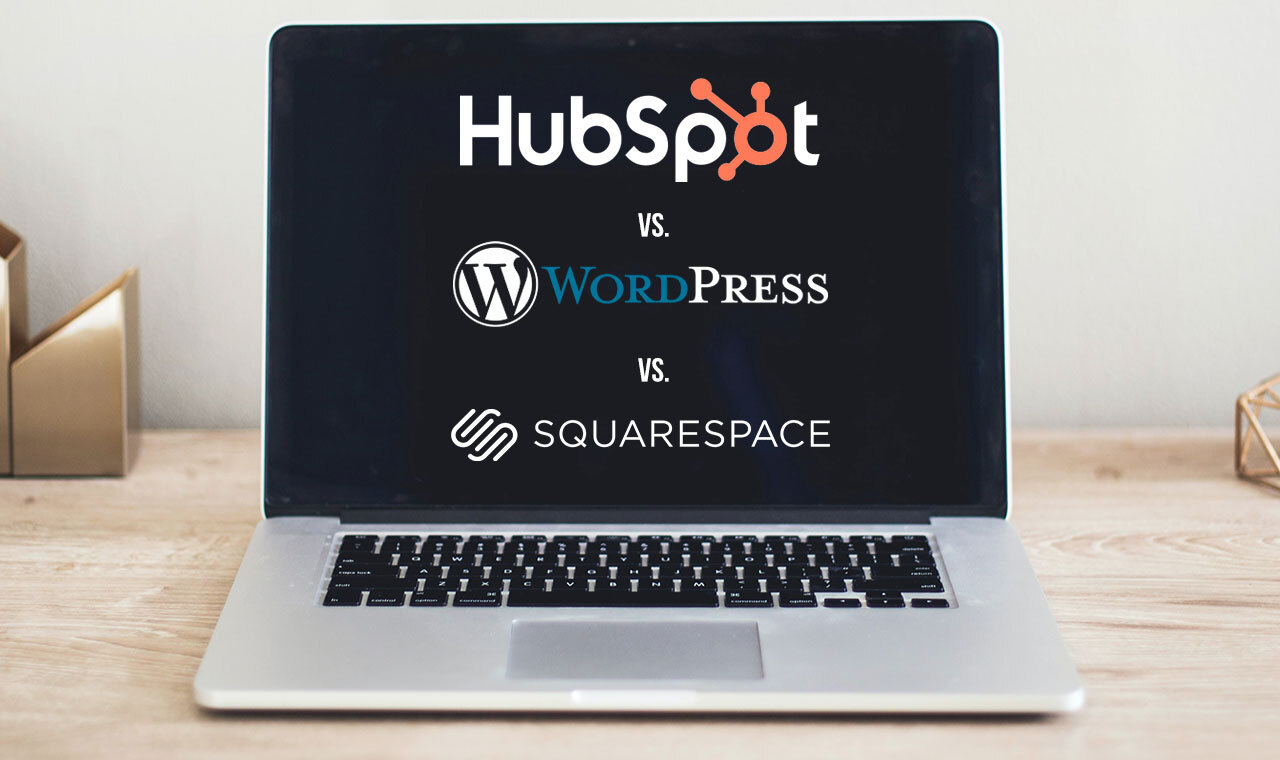3 SEO Best Practices for Success in 2025 Inspired by HubSpot's INBOUND
You’ve sharpened your keywords, built a content pillar strategy, and checked all the inbound marketing boxes. So, why does it feel so hard to get...
Take full advantage of the new and improved HubSpot CMS experience with the CLEAN theme.
Have a question and looking for an answer? I've likely got a video for that or an article that covers it.
Google PageSpeed Insights is the gold standard in analyzing the speed and performance of a website. Here is how CLEAN Pro ranks. Not too shabby for a media-rich page.

Report generated: Tues, March 7, 2023, based on Home Page - Opt 1.
6 min read
 Miriam-Rose LeDuc
:
October 29, 2021
Miriam-Rose LeDuc
:
October 29, 2021

Did you miss INBOUND 2021? I got you. There’s so much to absorb, so many trends to follow, and not enough time in the day. But don’t worry. I’ve put together my top 5 fav sessions and tips from this year’s virtual conference to keep you inspired and up to date. :)
To be completely transparent, I didn’t get to attend EVERY session INBOUND had to offer this year. But of the many I did, these ones stood out to me the most. If you’re a sucker for content creation tips and new SEO and storytelling strategies, I think you’ll love these as much as I did.
Plus, I compiled a killer list of book recommendations from INBOUND speakers that will make lifelong learners and Audible addicts like you and me feel like kids in a candy shop.
So without further ado, here’s my curated take on INBOUND 2021:
Jump to:
Session 3: Purpose-Driven SEO: A Modern SEO Strategy That Any Brand Can Deploy in 2022
Session 2: Trusted Content - 7 Steps To Becoming The Most Trusted Voice In Your Space
Top Takeaway: SEO is becoming less keyword-centered and more user-centered.
So, what does that mean for us marketers?
For starters, you’ve got to understand who your user is before you can create content that resonates with them. I’m not going to dive into that here, but if you’re curious about how to totally crush this, check out our Brand Canvas.
Once you've got a clear picture of your persona, focus on topics that affect their health, safety, financial well-being, or happiness, i.e. the Your Money or Your Life factor (YMYL, for short). This could include news, current events, financial advice, or shopping and product information.
You'll also want to use design methodology to drive desired behavior. One example that stuck with me was Fogg’s Behavior Model. It looks something like this:

Basically, behavior is most likely to happen when a person wants to take action (motivation), believes it won’t be too challenging (ability), and is reminded to do it (prompt).
If the behavior is difficult, it will require a lot of motivation (like a parent protecting their child from danger, for example). But without motivation, they'll be far less likely to follow through (think exercising or doing your taxes ahead of the deadline).
Motivation is tough to predict or change, so as marketers, we want to focus on ability. To work this into your content, start with your ideal customer’s goal, and make it as EASY as possible for them to achieve it.
Check out EasyMovie for an example of this. They’re attracting people who want to use a video solution and have enough motivation to research options online. EasyMovie offers a simple all-in-one platform (they even include easy in their name!), which suggests that anyone will have enough ability to use their product. The website has a clear CTA (Request a Demo) in a bold highlight color that's easy to find and very easy to click. Hitting the button takes the visitor directly to a scheduling tool, where they can choose a demo time that works best for them. No more back and forth trying to get in touch with a rep or wrestle with scheduling. Way to streamline the process and conversions, EasyMovie!
Plus, their website looks super CLEAN, if I do say so myself...
The next session I want to highlight builds on these behavior-driving principles through storytelling.
Top Takeaway: People don’t like to feel wrong. They want to feel smart, capable, and good.
This may seem like a no-brainer, but what I took away is the effectiveness of validation.
Tamsen demonstrated the idea with a mascot that she lovingly referred to as the Duck/Bunny. What the heck is a Duck/Bunny? Well, this:

I sort of gave it away in the title, but depending on how you look at this image, you see either a duck or a bunny. Both points of view are valid.
Now, most people like to think of themselves as open-minded. If their current perspective has been validated (yes, there is a duck in the image), they'll be willing to consider a second perspective (and if you look closely, you’ll also see a rabbit). The picture didn't change, but now the viewer can see it differently. This is key in driving behavior.
Here’s how this idea plays out in real life.
Take, for example, the De Beers Diamonds tagline “a diamond is forever”. Until 1947, when the tagline first appeared, engaged couples saw the ring itself as a symbol of their commitment to infinite love. The ring was the equivalent of the duck, in this case. But, once De Beers shifted the focus onto the kind of ring (the diamond, aka, the rabbit), many engaged couples agreed that the diamond could represent the same idea. That was the beginning of a massive shift in perspective that resulted in diamonds becoming the standard for engagement rings.
Notice that De Beers didn’t pitch a different product or say that rings were no longer an appropriate representation of marriage. They subtly validated that rings were a wonderful symbol of eternity but suggested that diamonds were too. They built upon an existing belief their audience had, and that’s what made the shift so powerful.
So, what’s the duck your audience sees? What rabbit can you help them find?
Top Takeaway: Pitch your purpose, not your product.
This doesn’t mean you should avoid talking about your product or service. Remember, your product info falls into the YMYL category, which will resonate with your potential buyers. However, creating content around your mission or cause can help drive organic SEO traffic to your site.
For example, take this case study from a manufacturing company. One of the founders volunteered on the weekends to teach young people about trade careers. When the company added a page to their site about recruiting the next generation of manufacturers, they started getting backlinks from companies that wouldn’t otherwise link to them. Many of these were organizations that helped young people find new job opportunities.
Another example was from YumEarth, a candy company that sustainably sources its ingredients. They started building authority and backlinks from other websites like Sustainability Nook who cared about health and the environment. These websites weren’t candy customers, but they did share a similar purpose.
What purpose-driven authority can you start building at your company?
Top Takeaway: Be detached from the outcome of your content.
Sure, as marketers, we want our content to lead to conversions. But if we appear to have a bias or agenda, our readers are turned off. They can smell what we’re up to, and they won’t trust us to present them with the honest information they’re looking for.
In Marcus Sheridan’s example, his swimming pool company featured a blog post titled "Vinyl Liner Pools vs. Fiberglass Pools: An Honest Comparison". Can you tell from the title which they want you to buy? No! They’re allowing you, the reader, to reach your own conclusion.
Remember how the storytelling session above highlighted people’s need to feel smart, capable, and good? Allowing your reader to form their own opinions helps them achieve that feeling.
Another example of being outcome-agnostic is talking about your competitors. Really? Yep! Just remember to stick to the facts and never say anything negative.
Anyone in the consideration or decision stage of the buying cycle will be looking for this exact information. And who do you want your potential customers to trust as their source? That’s right. You! :)
Here’s how IMPACT applied this idea. Check it out.
Top takeaway: Experimentation has led to some surprising discoveries about email opens.
Here’s what’s working TODAY:
(Use) [These] *Characters* in your subject line.
⌛ and these!⌛
Despite popular belief, parentheses, brackets, and asterisks are catching attention and increasing open rates (by 27%, 18%, and 25%, respectively). The bookend emojis trend is bumping up open rates up by 33%!
Other trends to look for right now are the ellipsis and…
The fake mistake. What’s that, you wonder?
Including oops! or something to that effect in the subject line makes people curious. They’re dying to know what you screwed up.
*Pro-tip*! Keep in mind that the changes to iOS 15 affect open rate data. While Apple is making our lives as marketers harder, it’s still possible (and necessary) to track open rates. But how?
Simply create a list in your CRM of all your non-Apple users (this is possible in HubSpot), and track the open rates for those users. Or use this handy tool.
Finally, remember that trends change, and getting seen in your reader’s inbox will only continue to become more challenging. Stay creative, and keep experimenting.
So, I’m curious, which of these strategies will you tackle first? Will you try a few new subject lines? Maybe take your website content in a different direction? Or simplify your landing page to encourage easy conversions?
Pick one, test it out, and drop me a line. I’d love to know how it goes.
P.S. Looking for more? Check out these great reads written and recommended by speakers at this year’s INBOUND. They’re already on my Audible wishlist.
And wait - before you go, did I miss anything? Tell me your main takeaways from INBOUND 2021! I’m all ears.

You’ve sharpened your keywords, built a content pillar strategy, and checked all the inbound marketing boxes. So, why does it feel so hard to get...

Wondering which website platform is right for you? I’m here to help you weigh the pros and cons of a few key players: WordPress, Squarespace, and the...

Marketers and business owners like you are asking: how can I get more eyeballs on my product or service in this new age of AI? What is Answer Engine...